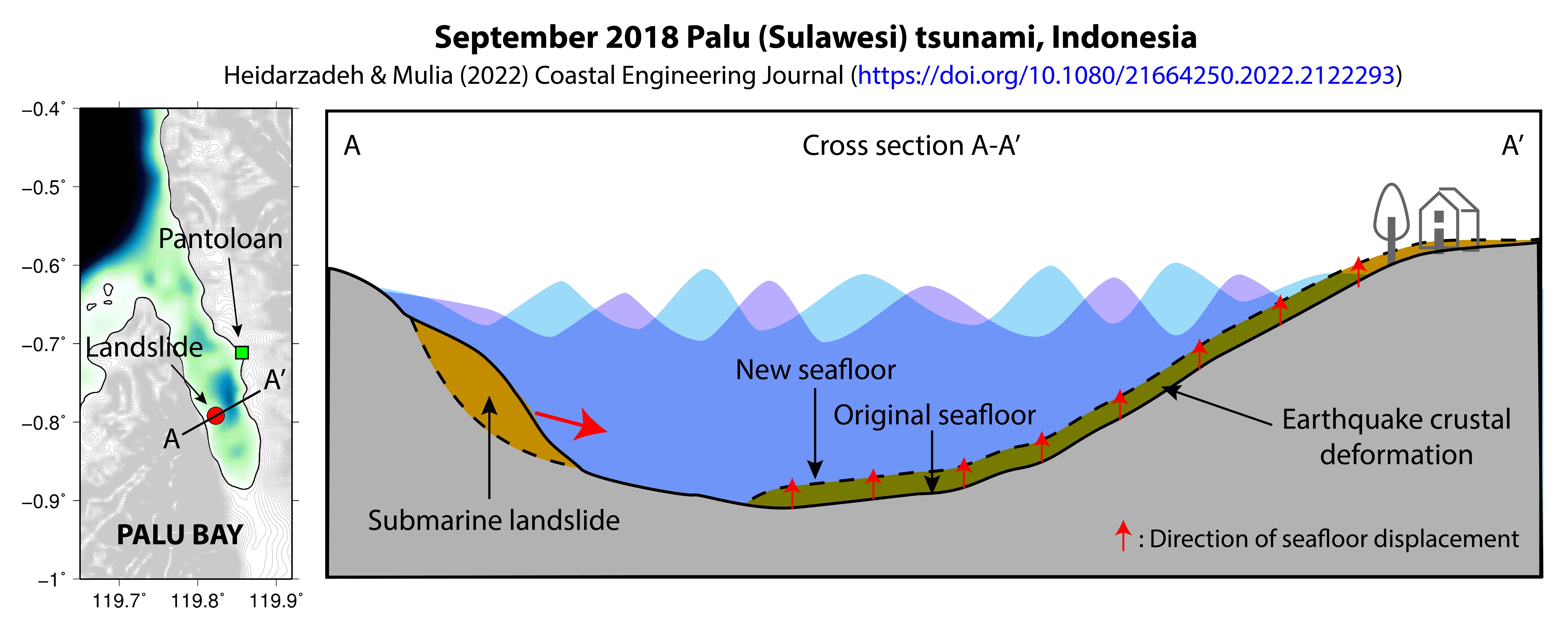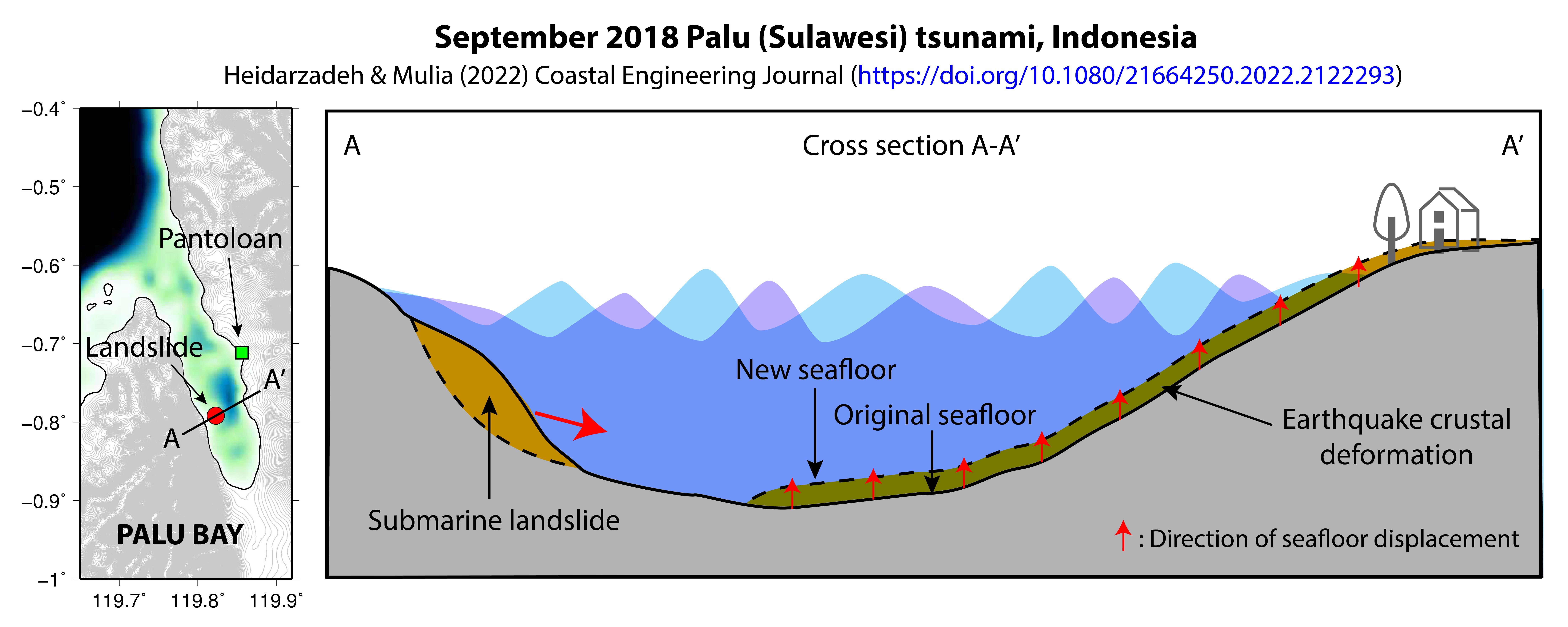A new article by Dr Heidarzadeh
See the full article here (free pdf): https://doi.org/10.1080/21664250.2022.2122293
Abstract (based on https://doi.org/10.1080/21664250.2022.2122293):
The September 2018 Palu (Sulawesi, Indonesia) tsunami has been a heavily debated event because multiple source models of three different types have been proposed for this tsunami: (i) The Mw 7.5 earthquake, (ii) landslides, and (iii) dual earthquake and landslide. Surprisingly, all of these three types of models were reported as being successful in the literature in terms of reproducing the existing tsunami observations. This can be partly attributed to the limited observations available for this tsunami. This study is motivated by the results of a marine bathymetric survey, which identified evidence for submarine landslides within the Palu Bay. Our modeling shows that the tsunami cannot be exclusively attributed to the Mw 7.5 earthquake. Inspired by the results of the marine survey, we propose a dual source model including a submarine landslide although most of the existing models include subaerial coastal landslides. Our dual model comprises an earthquake model, which has a length of 264 km, a width of 37 km, and a slip of 0–8.5 m, combined with a submarine landslide with a length of 1.0 km, a width of 2.0 km, and a thickness of 80.0 m located at 119.823°E and −0.792°S.

Figure: Sketch showing the final dual (earthquake and submarine landslide) model proposed in this study for the September 28, 2018 Palu (Sulawesi) tsunami. This sketch highlights the cascading multi-hazard nature of the 2018 Palu tsunami catastrophe (https://doi.org/10.1080/21664250.2022.2122293).
